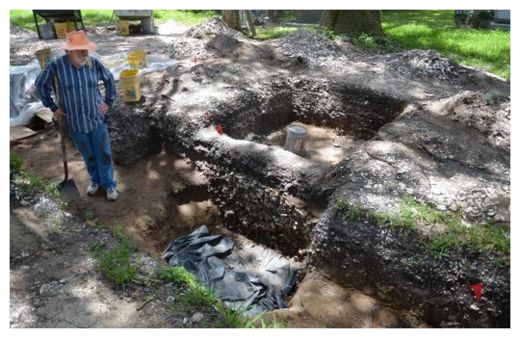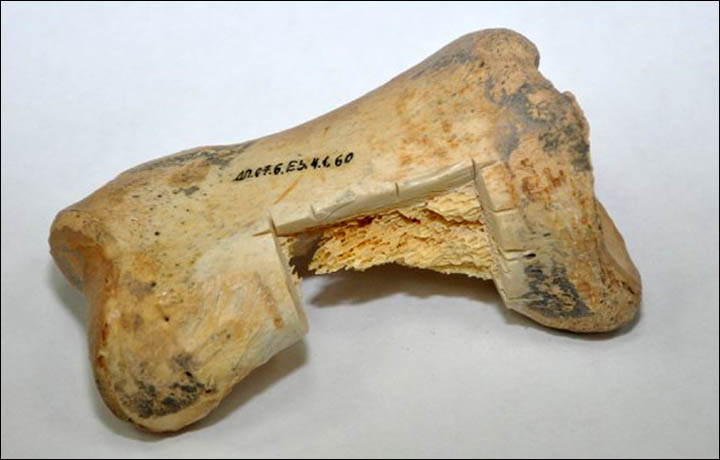
© Peter WillottCity archaeologist Carl Halbirt looks at an area of one of his digs off May Street on Thursday, where he believes he has uncovered a Timucuan Indian well than is more that 500 years old.
An archaeological discovery made earlier this summer could show that indigenous people in the St. Augustine area once built and used wells before ever being exposed to European influence.
Local archaeologists previously assumed that the Timucuan indians, who settled in the area before the Spanish arrived, received fresh water from "seeps" in nearby embankments.
"We've never found an example like that, that predates the European settlement here," city archaeologist Carl Halbirt said. "It gives us an idea of where the indigenous population possibly obtained their water."
What appears to be a coquina well was discovered on a property near the Francis and Mary Usina Bridge in June, as part of a county ordinance which requires certain properties to be investigated for archaeological deposits before construction.
The excavation site is littered with historical value. Halbirt said the city has extracted more than a ton of shell, mostly oyster shell, and "tens of thousands" of animal bones, primarily from small fish.
"From that evidence, this is going to give us a really good idea of what their subsistence was like during that time period," Halbirt said. "Most of the shell is fish, but we also have deer, turtle, water birds, and I think we have alligator."



Comment: Check out part 2 of our discussion about 'Jesus' as Caesar here.